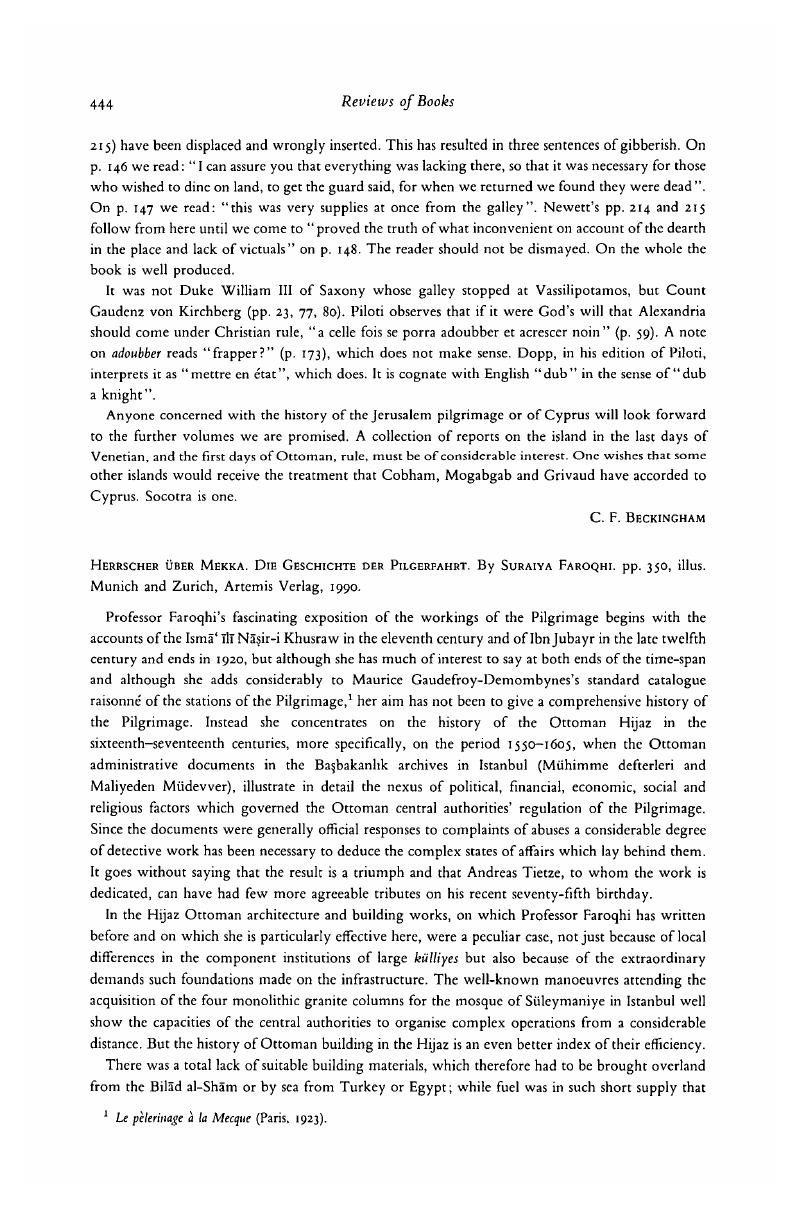No CrossRef data available.
Published online by Cambridge University Press: 24 September 2009

1 Le pèlerinage à la Mecque (Paris, 1923).Google Scholar
2 Flügel, , Handschriften Wien, ii,Google Scholar pp. 125ff., no. 897.
3 cf. Ettinghausen, Richard, “Die bildliche Darstellung der Ka‘ba im islamischen Kulturkreis,” ZDMG LXXXVII (Leipzig, 1934), 111–37;Google Scholar and Tanmdi, Zeren, “Islam resminde kutsal kent ve yöre tasvirleri,”journal of Turkish Studies (= Orhan Şaik Gökyay Armağam II), (1983), pp. 407–37.Google Scholar
4 An interesting consequence of the policy adopted, annual subventions, with periodic repression when cash was not enough, was that the success of T. E. Lawrence's “Revolt in the Desert” was a foregone conclusion; for although the construction of the Hijaz railway was to simplify the Pilgrimage for ever greater numbers of pilgrims this deprived the Bedouin of their subventions from the Ottoman government. This was a serious oversight, but Professor Faroqhi notes the contemptuous tone of many orders regarding the Bedouin, and plausibly attributes it to the grandly dismissive Europeanising attitude of the Ottoman viziers of devşirme origin.